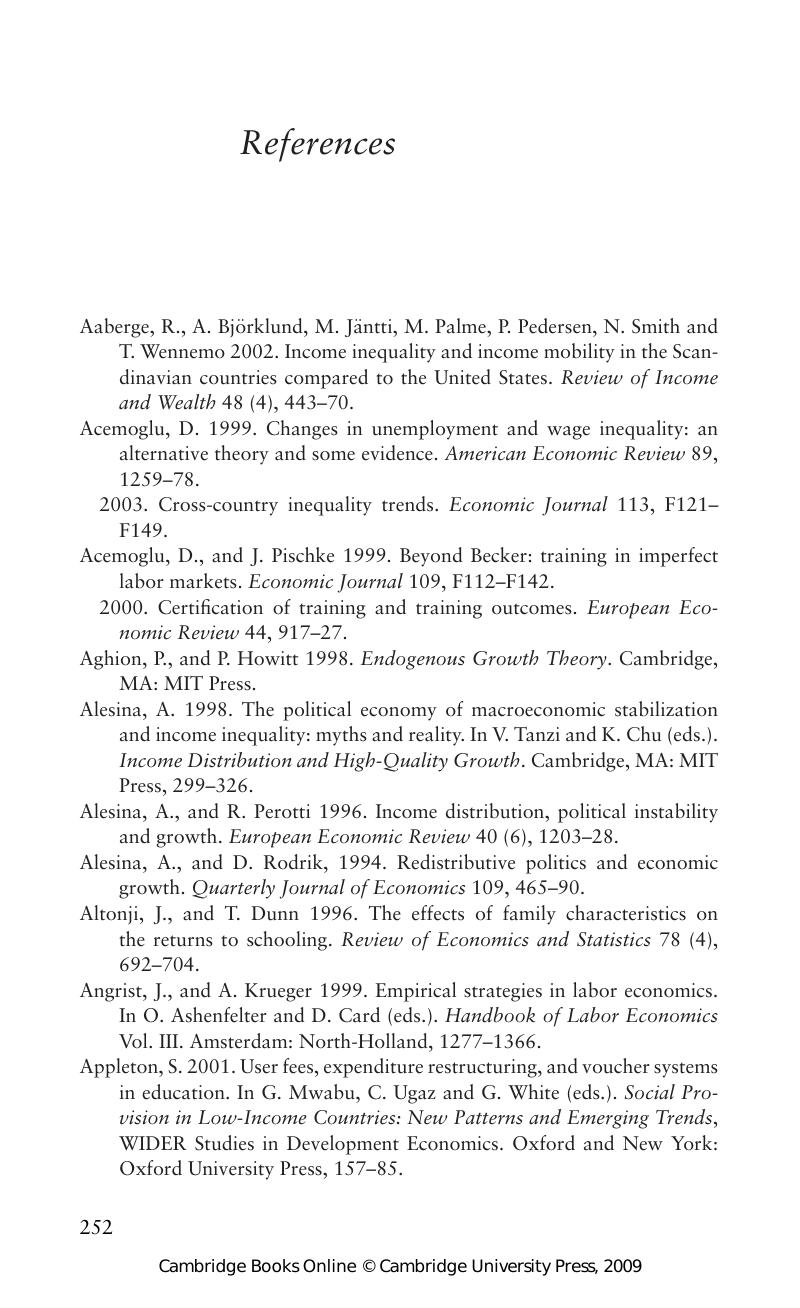Book contents
- Frontmatter
- Contents
- List of figures
- List of tables
- Preface
- 1 The relevance of education
- 2 The demand for education
- 3 Liquidity constraints and access to education
- 4 The supply of education
- 5 Education financing
- 6 The return on education
- 7 Intergenerational persistence
- References
- Subject index
- Author index
- References
References
Published online by Cambridge University Press: 22 September 2009
- Frontmatter
- Contents
- List of figures
- List of tables
- Preface
- 1 The relevance of education
- 2 The demand for education
- 3 Liquidity constraints and access to education
- 4 The supply of education
- 5 Education financing
- 6 The return on education
- 7 Intergenerational persistence
- References
- Subject index
- Author index
- References
Summary

- Type
- Chapter
- Information
- The Economics of EducationHuman Capital, Family Background and Inequality, pp. 252 - 271Publisher: Cambridge University PressPrint publication year: 2006

